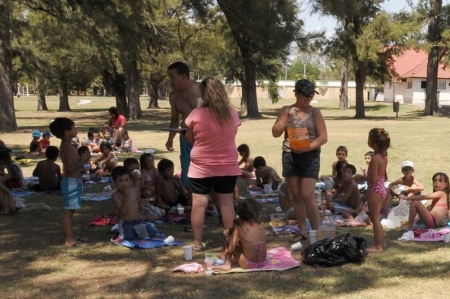Diarrheal diseases in children are usually more harmful than in adults and in summer the risks of dehydration “increase considerably”warned pediatric specialists, so they recommended paying attention to symptoms such as decay, vomiting, colicky pain and bleeding in the stool.
“Diarrhea in summer affects more because, apart from the viral or bacterial situation, the heat favors fluid loss. Children have a greater proportional liquid body volume than adults, which leads to dehydration more easily,” affirmed Pablo Barvosa, a pediatrician at the Garrahan Hospital, in dialogue with Télam.
Diarrheal diseases are infections of the digestive tract that can be caused by bacteria, viruses or parasites.and whose main symptom is diarrhea, that is, the deposition of three or more times a day of loose or liquid feces, indicated the Ministry of Health.
In this sense, diarrhea tends to be more frequent in summer due to high temperatures, which favor the spread of the bacteria that cause it.
There are three types of diarrheal diseases: acute watery diarrhea, which lasts several hours or days, as in the case of cholera; acute bloody diarrhea, also called dysenteric diarrhea or dysentery; and persistent diarrhea, lasting 14 or more days.
“To the extent that the precautions are taken and the alarm guidelines are taken into account, they are pictures that have a good evolution. You have to pay attention to the hydration of liquids and salts, that the boy or girl continues to urinate and that they have a wet tongue, “said Barvosa.
The signs of dehydration are: having eyes without tears, a dry tongue and pale and dry skin or very sweaty as if you are losing temperature; not urinate and not have turgidity when squeezing the skin, that is, make “folds” or sink your fingers into the skin.

Other factors that must be considered with the presence of this type of diarrheal disease is the child’s state of mind, if they are down, if they are upset with colic pain, and most importantly, if there is blood in the the fecal matter.
“Whenever there is blood, it is a sign of attention because they are more invasive diarrheas,” detailed the specialist of the most important pediatric center in the country.
And he added that, in our country there is a disease that is very present, which in most cases is generated by the intake of undercooked meat, and it is hemolytic uremic syndrome (HUS).
“Of 800 annual cases in the world, 400 correspond to Argentina,” Barvosa warned.
For her part, Ángela Nakab, a pediatrician specializing in adolescence and a member of the Argentine Pediatric Society (SAP), told Télam that in many cases diarrhea is also associated with vomiting, which is usually the first symptom to appear, and is the which we commonly know as gastroenteritis.
“The cause of gastroenteritis is multifactorial. The most common is that it is through a virus, bacteria or parasites that produce an inflammatory infection in the intestine”said.
And he remarked that when there is blood in the stool, there are different types of germs that cause it, such as rotavirus or Escherichia coli, the bacteria that cause HUS.
Rotavirus is the most common cause of diarrhea in children under 5 years of age and the most frequent complication is dehydration, according to the health portfolio.
In Argentina, the vaccine against rotavirus diarrhea has been in the national vaccination schedule since 2015, and it is supplied in two doses: the first in two-month-old babies and the second when they are four months old.
Barvosa explained that this vaccine had a “very noticeable impact in Argentina” and that “there are fewer and fewer cases of boys and girls affected with this virus.”
The main routes of contagion of these diseases are from person to person, by the fecal-oral route; through the consumption of contaminated water or food and through contact with surfaces where the virus still persists (diapers, toys, among other objects used daily).
“The younger the baby, or those under two years of age, the more serious the chances of dehydration are. That’s why emphasis must be placed on hydration”Nakab noted.
As a general recommendation, both specialists agreed that the best way to treat these diseases is through the consumption of water and, with the indication of a doctor, through the intake of rehydration salts, recommended by the WHO and that can be obtained in pharmacies or medical centers. of health.
“Mild dehydration can be treated at home, moderate to severe dehydration in a health center, and can be treated either orally or intravenously,” said the specialist.
It is important to point out that soft drinks and isotonic rehydration drinks after physical activity, which are usually consumed in gyms or after doing sports, are not indicated by doctors since “they do not have the necessary amount of salts or glucose”.
“You don’t have to give the boys or girls juices, sodas or excess sugar because that can increase diarrhea, and it can make you lose even more fluid”Nakab remarked.
Also, if they are babies and are breastfeeding, it is important not to stop breastfeeding, and if they drink milk in sachets, try to make it lactose-free.
The specialists insisted that the most “classic” diarrheas are “controllable” and that it is extremely important to reinforce and encourage vaccination in boys and girls, in addition to maintaining proper hydration and nutrition.
“Most of the diarrheas thanks to the use of oral rehydration salts are managed on an outpatient basis, the earlier the consultation, the faster the therapy is established and the better the evolution,” concluded Barvosa.


















